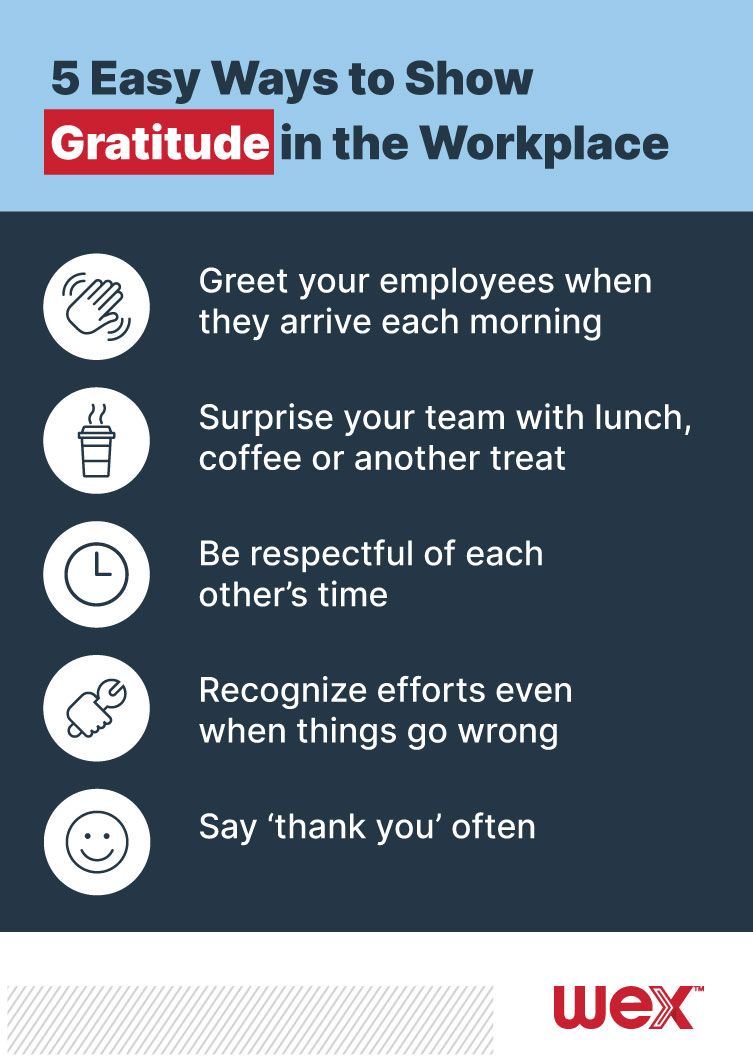Stay connected
Subscribe to our health benefits blog and follow us on social media to receive all our health benefits industry insights.

November is National Gratitude Month – and we’re taking the opportunity to shift our focus from the negative to appreciating what is positive.
While ‘gratitude’ may not be the most-used word in your vocabulary at work, it definitely should not be forgotten. From enhanced mood, improved productivity, stronger relationships and a happier workforce, gratitude plays an important role in organizational success.
Ultimately, gratitude in the workplace can lead to deeper connections to not only each other, but to the work you’re doing each and everyday. So, take a moment to stop, say ‘thank you’ and read our top 5 benefits of gratitude in the workplace.
It’s easy to limit appreciation to the task at hand, such as goals or objectives set by the company or management. However, there’s an unspoken need for other types of support. Many employees want more than just recognition for a ‘job well done.’ They want to feel comfortable approaching leadership and peers about a range of subjects, including those unrelated to work. Show appreciation for employees by recognizing their ability to make others laugh or strike up a conversation about their after-hours volunteer work. Soft ‘perks’ such as flexible work arrangements are another way to show gratitude for hard work, and similar gestures could have a positive impact on your team’s productivity and happiness.
Work life can be stressful – especially in a management or leadership role. Did you know that expressing gratitude can be a way to manage stress? It’s true! The expression of gratitude has profound and positive effects on both our health and moods. This, in turn, helps create positive emotions and feelings of joy, which can translate into increased engagement and productive interactions at work. All of this can mean great things for your organization. According to a study, employees are 50 percent more successful when leaders show gratitude for their efforts. It’s a win-win.

When considering gratitude in the workplace, it’s important to remember that not everyone wants to be appreciated in the same way. For example, while some employees thrive off public praise, it could make others want to hide under their desks. Workplaces bring together diverse groups of people each with unique communication styles, backgrounds and skill sets. It’s the employer’s job to recognize these differences at the individual level and express gratitude in more ways than one.
It’s natural to think that gratitude is beneficial for the recipient. While this is true, gratitude positively influences both parties. In fact, gratitude is a way to strengthen relationships with others, including those you work with. Interested in an easy way to strengthen your professional relationships? Say “thank you.” Whether via email, a hand-written note, or face-to-face communication, expressing thanks is a simple yet effective way to acknowledge that an action (or person) is valuable and meaningful to you.
Company culture is a huge factor when it comes to employee retention and onboarding top talent. In today’s tight market, people want more than just a job, but a place where they are more likely to enjoy their time in the workplace and the people around them. When practicing gratitude in the workplace (both personally and encouraging others to do the same) your workforce will be happier, more productive, and hopefully demonstrate employee advocacy to attract new talent and create positive onboarding experiences.
Gratitude is a powerful concept. It goes beyond praise and beyond positive reinforcement to create professional bonds. One of the greatest things about expressing gratitude is that it can be contagious. Meaning, a simple ‘thank you’ can change the way employees interact, feel and perform.
The information in this blog post is for educational purposes only. It is not legal or tax advice. For legal or tax advice, you should consult your own counsel.
Subscribe to our health benefits blog and follow us on social media to receive all our health benefits industry insights.